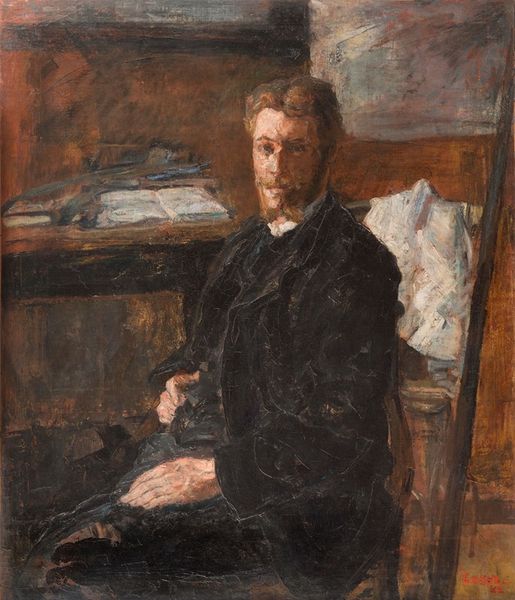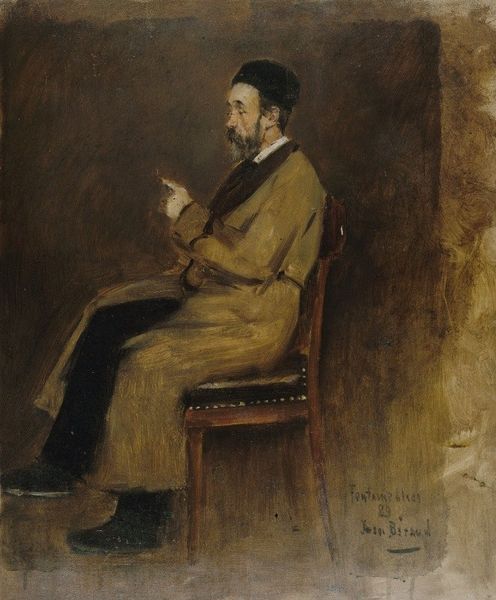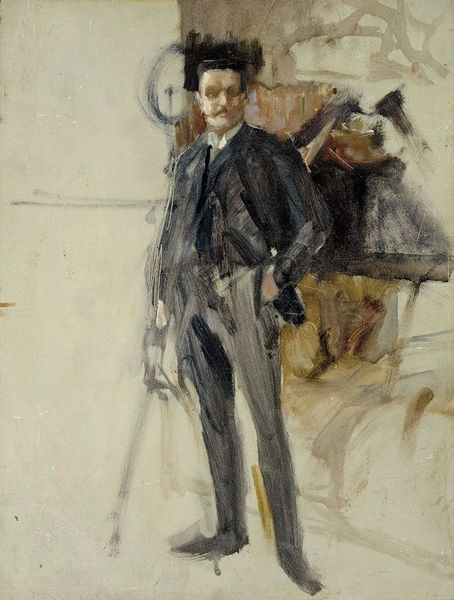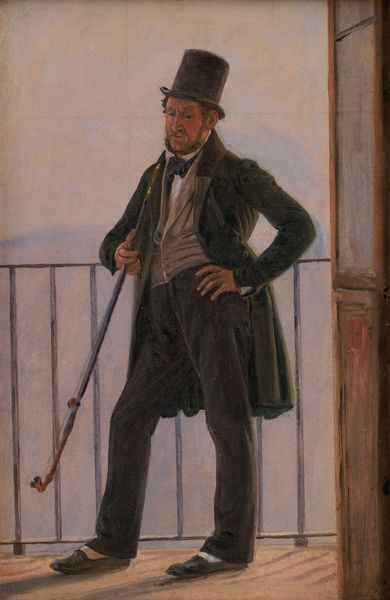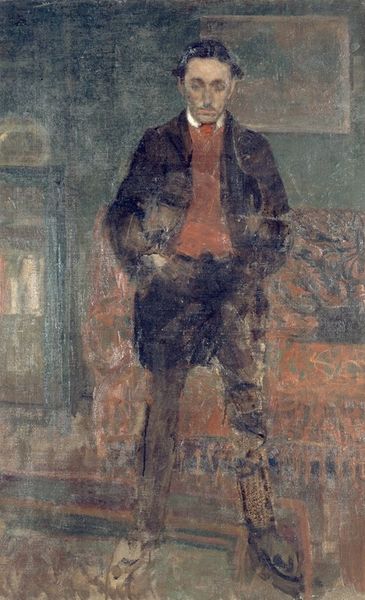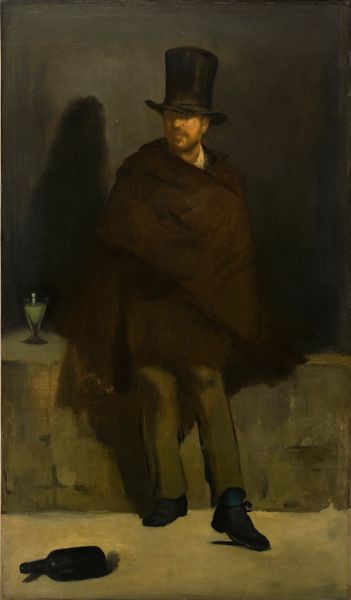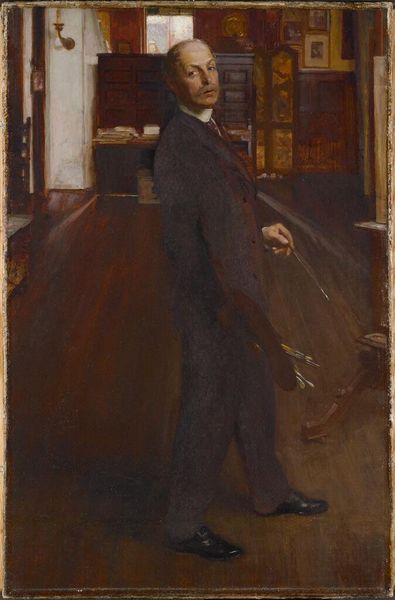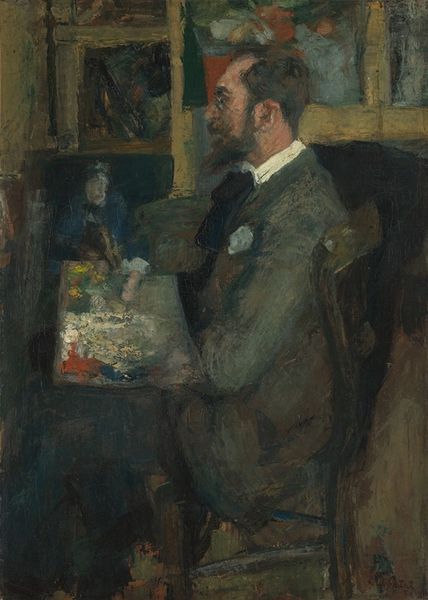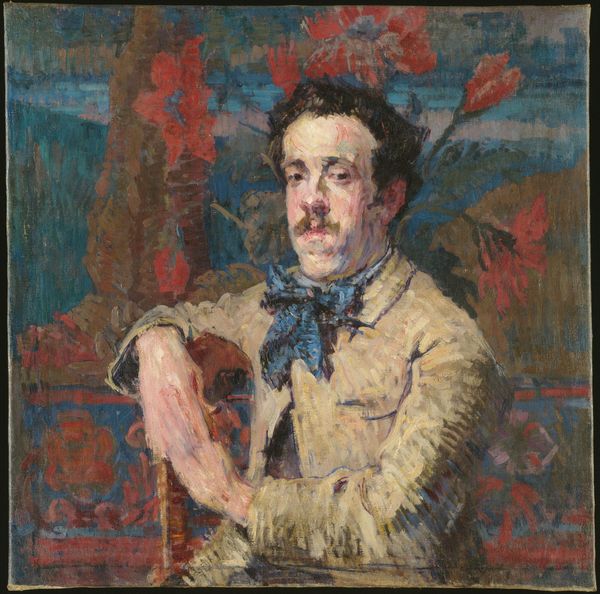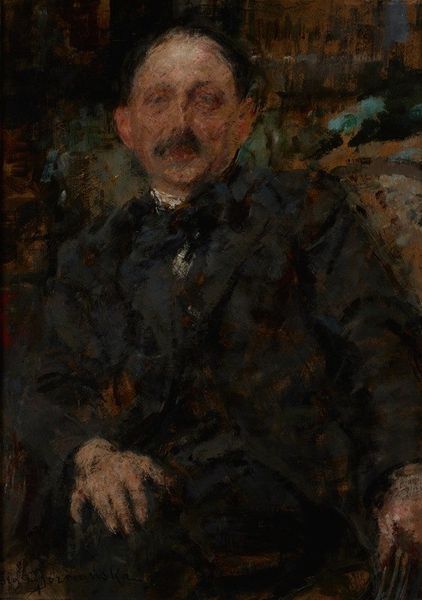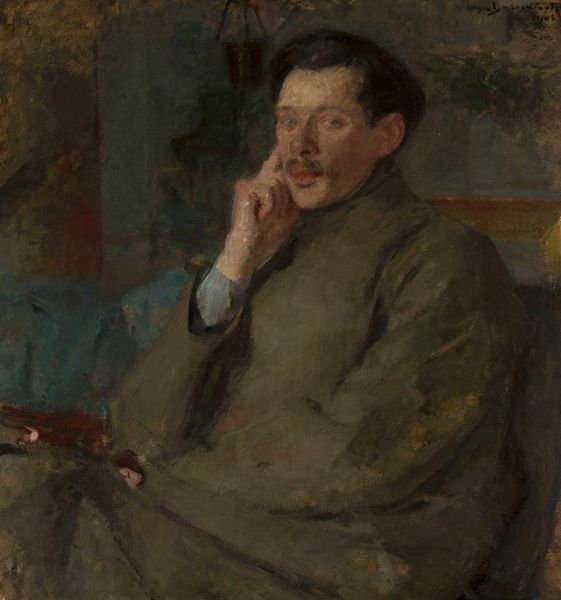
oil-paint, impasto
#
portrait
#
figurative
#
self-portrait
#
oil-paint
#
painted
#
figuration
#
oil painting
#
impasto
#
symbolism
Copyright: Public Domain: Artvee
Curator: At first glance, this painting feels muted, almost dreamlike in its soft edges and desaturated palette. Editor: You're perceiving James Ensor's "Ensor at his Easel" from 1890. What's compelling to me is the performative aspect—the artist representing the artist, in his personal ecosystem, crafting meaning. The materiality really drives that point home. Curator: Yes, the thickness of the oil paint is immediately apparent. Ensor's use of impasto lends a tactile quality to the canvas. The brushstrokes are visible, energetic...You can practically see him at work! I am thinking of the ways painting allowed working-class individuals in the late 19th Century avenues to gain social and even economic visibility through this cultural means of production. Editor: Right! This painting could be read within the contexts of class and the artist's social identity. The very act of portraying himself with his tools, actively working, is a claim to legitimacy, perhaps pushing against elitist views that relegated artistic creation to mere leisure. We can trace an argument on labor rights. Curator: It raises questions about labor—the artist's labor, specifically. Look at how deliberately he renders his palette, those gobs of oil paint, and his well-worn easel. There's an inherent validation embedded into this painting: that making art IS work, a form of work that creates value! Editor: Absolutely! Furthermore, Ensor doesn't depict himself in idealized heroic form. He presents himself in an unassuming, rather domestic scene. Look closely! the unadorned background reinforces the ordinariness. This isn't the glamorous garret—it's a working space. And notice the statuette to his left and another picture hanging—those objects situate him firmly within a network of references and ideas, both classical and contemporary. Curator: You're right. The symbolism is fascinating. I notice too the use of subdued coloration except within the painting itself and his own face. I feel that the coloristic dynamic highlights the artist’s internal world as much more exuberant than his perceived reality! It shows the psychological depth beneath his persona and art. Editor: And by emphasizing these internal spaces in the canvas, Ensor invites us to examine not just the creation, but also the politics of making the artist’s subjective role an object of analysis and aesthetic discourse. Curator: Considering all this helps us see how Ensor was really thinking through and portraying labor and even the state of visual representation at that moment. Editor: Precisely. He's constructing his own mythology of the artist. This isn't just a painting; it's a powerful act of self-fashioning, steeped in complex negotiations of art, identity, and value.
Comments
No comments
Be the first to comment and join the conversation on the ultimate creative platform.
